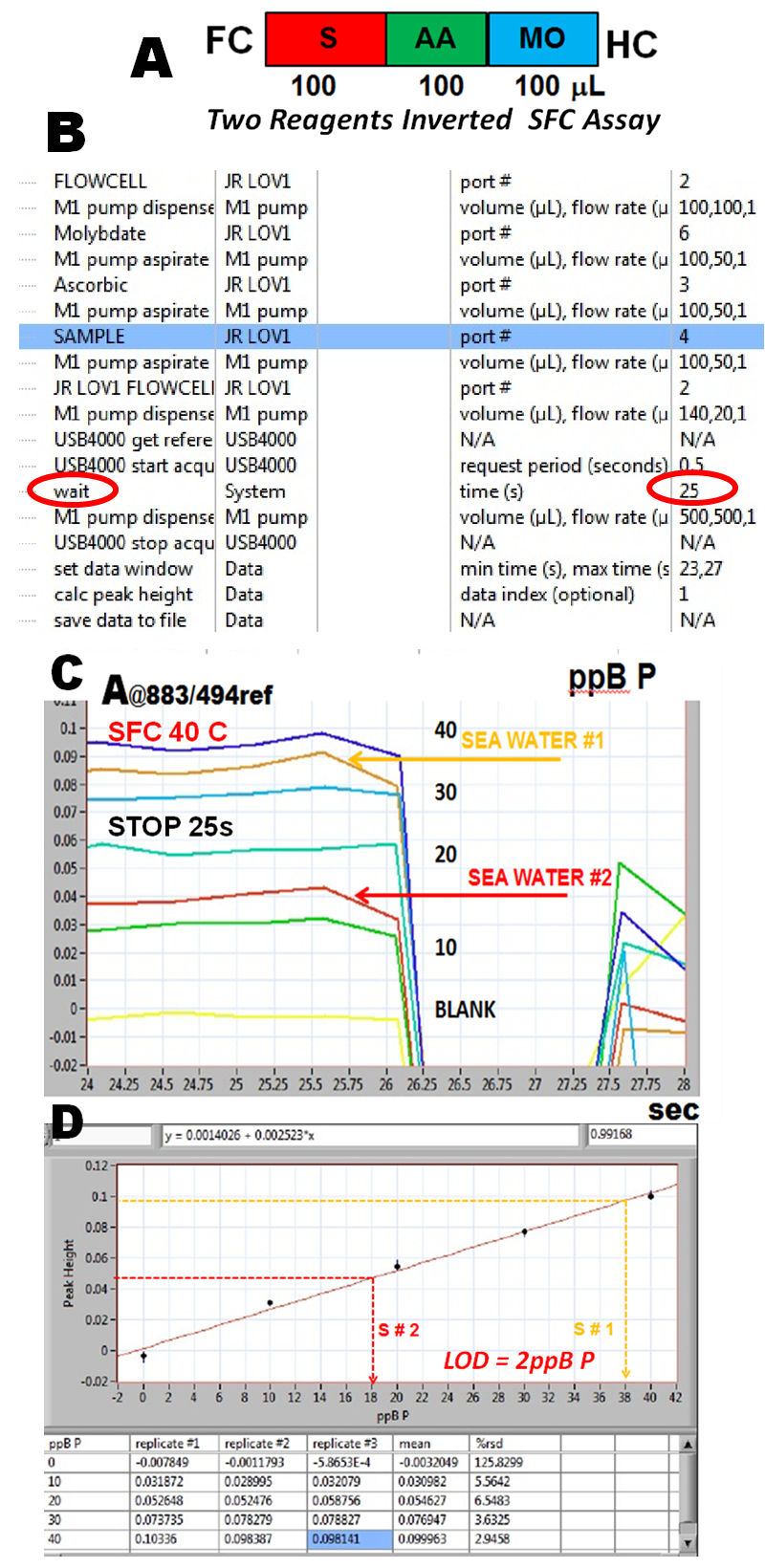Open sea water may contain as low as nM concentrations of phosphate, for analysis of which, the inverted sequence (A) and SFC assay protocol (B) is most suitable. The instrument
was furnished with 12 cm long flow cell, thermostated to 40C. The sample and reagent mixture was monitored for 25 seconds. Standards in the range 0 to 40ppB P were prepared in DI water and DI water was also used as a carrier.
The calibration responses, along with responses of two sea water samples are shown overlaid (C) as single traces, since the software graphics did not have capacity to depict all response curves, run in triplicate. The data (max A values) captured within the 23 to 27 window (B) were used to construct the calibration graph (D), on which also sea water samples are shown superimposed.
Sea water samples used are the reference material, collected for CO2 research. Sample #1 was undiluted, Sample #2 was S#1, diluted 1/1 with DI water. The mean absorbance values were for S#1 0.096 and for S#2 0.046, yielding 38 ppB P for S#1, and 18 ppB P for S#2 (1.2 microM P and 580 nM P).
While this is, of course, only a feasibility study, which needs further experimental verification, it opens the way for the use of compact, robust, and portable analyzer for oceanographic research.
Phosphate in Sea Water
0 to 40 ppB, 60s/hr LOD 60nM P
2.2.29.










